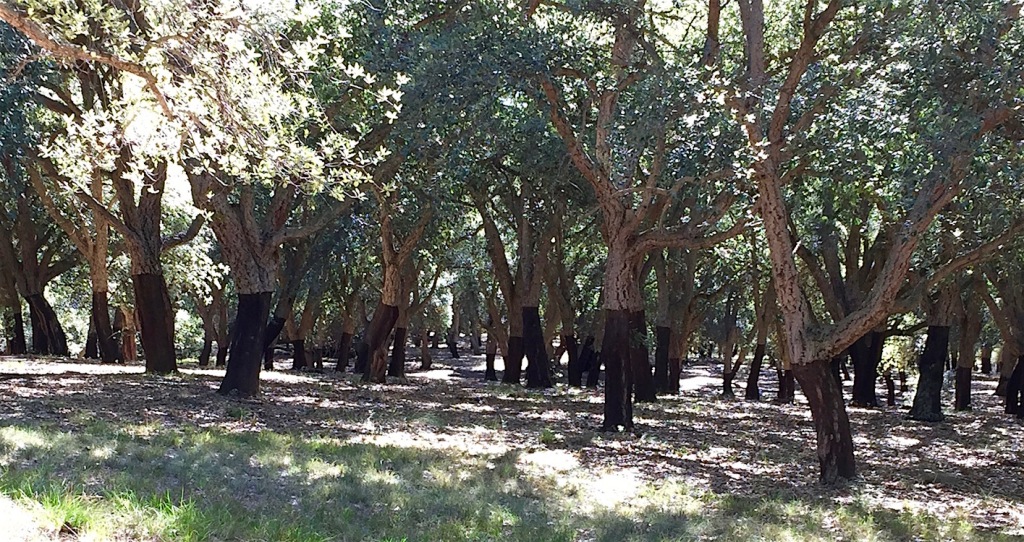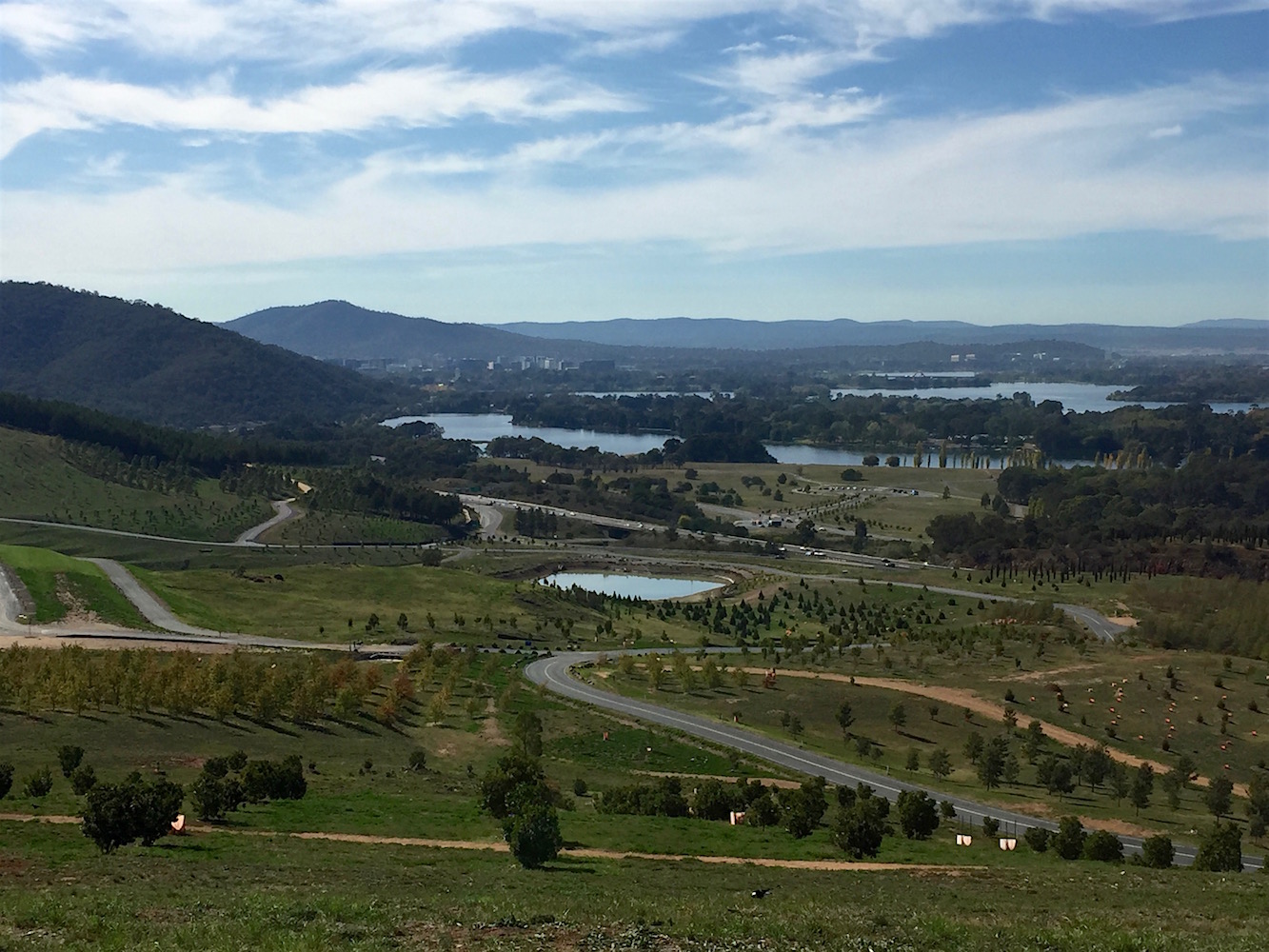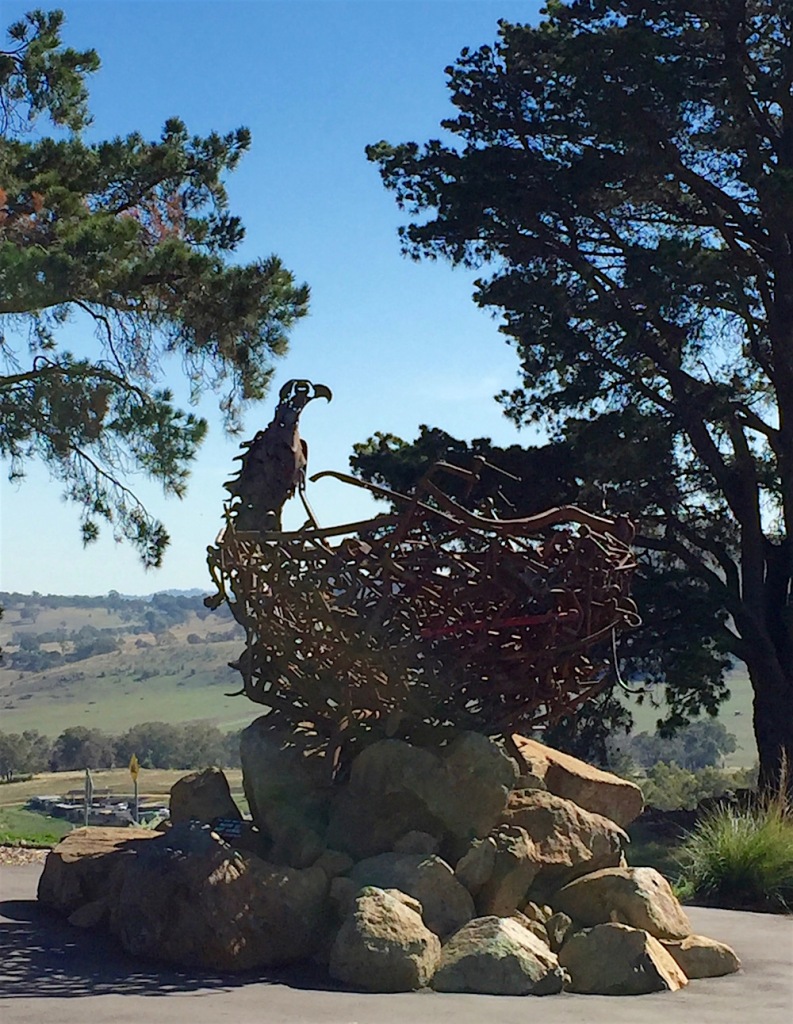Before embarking on the long 7.5 hour drive back to Melbourne, I spent Tuesday morning at the National Arboretum in Canberra. This is mostly very new, with all but two of the 100 forests planted in the last two decades.
It is on a 250 hectare site previously occupied by pine plantations that were destroyed in the 2003 bushfires. A long loop road takes you past the forests, at this stage just young trees and you have to use your imagination to appreciate what an amazing place it will be.
Dairy Farm Hill is just south of the centre and affords fantastic views of the forests, lakes and mountains. There is a viewing platform beneath some old pines that survived the fire. It faces east so you are looking across Scrivener Dam to Yarralumla.
An imposing sculpture Nest III Richard Moffatt by is set on another rise, with the wedge tail eagle surveying the Arboretum below.
From the other side of the hill there are fantastic views of Mount Stromlo and the Australian Alps.

Even though it was early in the morning, the visitor centre car park was looking very full so instead I went to the Himalayan Cedar Forest. This I learned from the Friends of the Arboretum who were working on the pathway to the picnic area, was part of Green Hills. In the original plan for Canberra, Walter Burley Griffin had envisioned a ‘Continental Arboretum’ with sections for species from each continent. This was never completed although the current Arboretum picks up on that idea.
Down another road is the other old section, the Cork Forest. This was also a Burley Griffin vision. He believed the climate was right for a cork industry and while not commercially successful the remaining trees are stripped every ten years, most recently by professional harvesters from Portugal.

The forest was planted in 1917 and 1920 from acorns collected at the Royal Botanic Gardens Melbourne. They are close together to encourage long straight boles and laid out in a quincunx pattern, a square with one tree at each corner and one in the middle. This produces the beautiful radiating avenues.

Even though the Tuggeranong Parkway is close by, it is a very peaceful spot. Children must love it too, this living cubby is constructed around a fallen tree that is still growing.
At the far end of the forest, groups of large black birds were digging into the leaf litter with their beaks. They ignored me as I peered through the dark shadows to try and work out what they were. Then one helpfully fanned out its wings long enough for me to take a photo. Back home I am able to use my bird book to identify them as White-winged Chough, found in dry woodlands, in parties.











The arboretum is a beautiful work in progress.
We learnt in Bordeaux, the cork tree is becoming extinct in a lot of areas of the world, that is why wine bottles now have plastic corks and screw top lids.